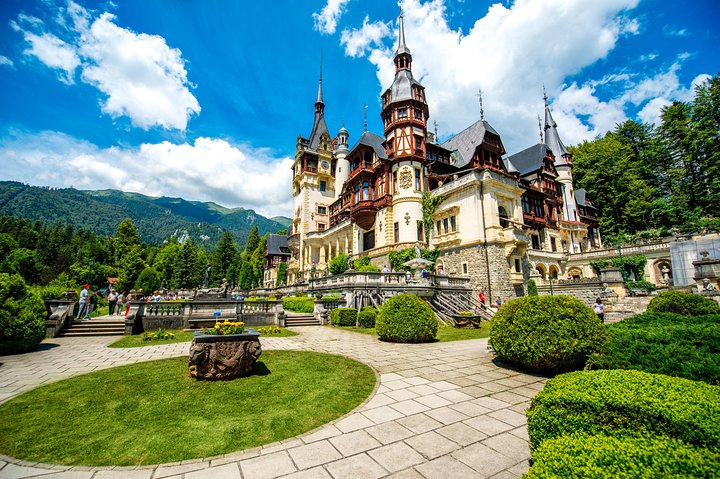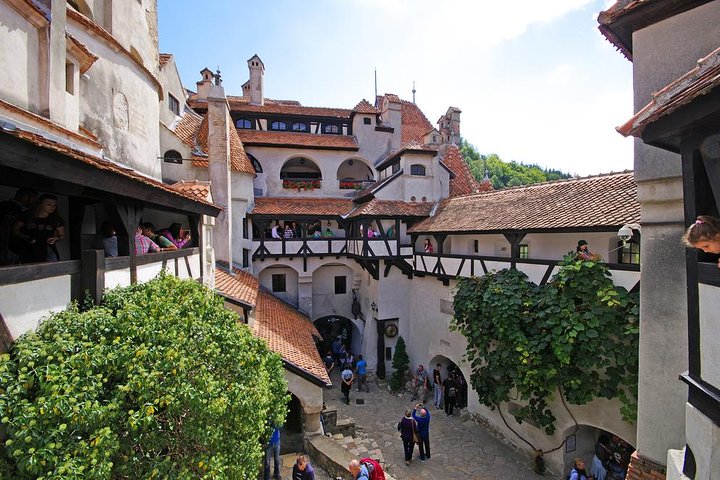Whispers of the Past: A Transylvanian Winter’s Tale
In the heart of winter, I embarked on a journey through Transylvania, drawn by the allure of history and legend. The snow-covered landscapes and ancient castles promised a day of discovery and introspection.
A Journey Through Time and Snow
The morning air in Bucharest was crisp, a harbinger of the winter to come. As I stood at the Statie Taxi Universitate, waiting for the coach that would take me on a journey through the heart of Transylvania, I felt a familiar sense of anticipation. This was not just a tour; it was a pilgrimage into the past, a chance to walk through the corridors of history and legend.
Our first destination was Peles Castle, nestled in the mountain resort of Sinaia. The journey there was a tapestry of landscapes, each more enchanting than the last. As we ascended into the Carpathians, the first snow of the season began to fall, transforming the world into a scene from a fairy tale. The snow, though it delayed our travel, added a layer of magic to the day, a reminder of the beauty that can be found in the unexpected.
Peles Castle itself was a revelation. Built by King Carol I, it stands as a testament to the opulence and grandeur of a bygone era. Walking through its halls, I was struck by the intricate details, the craftsmanship that spoke of a time when beauty was a pursuit in itself. It was easy to lose oneself in the stories whispered by the walls, to imagine the lives of those who had once called this place home.
The Allure of Legends
Our journey continued to Bran Castle, a place steeped in myth and mystery. Known to many as Dracula’s Castle, it looms over the valley, its Gothic towers piercing the sky. As I explored its winding staircases and shadowed chambers, I couldn’t help but feel the weight of its history. This was a place where legends were born, where the line between fact and fiction blurred into a tapestry of intrigue.
The castle’s connection to Vlad the Impaler, the inspiration for Bram Stoker’s Dracula, added an air of the macabre to the experience. Yet, beyond the tales of vampires and tyrants, there was a deeper story to be found. It was a story of resilience, of a fortress that had stood the test of time, a sentinel watching over the land it once protected.
As I stood on the battlements, looking out over the snow-dusted landscape, I felt a sense of connection to the past. It was as if the castle itself was a bridge, linking the present to a time long forgotten. In that moment, I understood the allure of legends, the way they capture our imagination and hold us in their thrall.
A Walk Through History
Our final stop was the town of Brasov, a place where history and modernity coexist in harmony. The cobblestone streets and centuries-old buildings spoke of a time when life moved at a different pace. As I wandered through the town’s historical center, I was struck by the sense of continuity, the way the past was woven into the fabric of the present.
The Black Church, with its imposing Gothic architecture, stood as a reminder of the town’s storied past. Inside, the air was thick with reverence, a sanctuary from the world outside. It was a place to reflect, to ponder the passage of time and the stories that endure.
As the day drew to a close, I found myself reluctant to leave. There was a sense of belonging here, a feeling that I had found a piece of myself in the winding streets and ancient stones. The journey back to Bucharest was long, the coach cutting through the night like a ship through dark waters. Yet, as I watched the snow fall outside the window, I felt a sense of peace. This journey, like so many before it, had been a step on the path of self-discovery, a reminder that the past is never truly gone, but lives on in the stories we tell and the places we visit.
In the end, the Transylvania tour was more than just a trip; it was an exploration of the soul, a journey into the heart of history and legend. It was a reminder that, even in the midst of change, there are places where time stands still, waiting for us to discover their secrets.












































